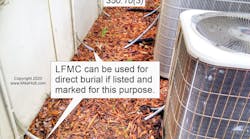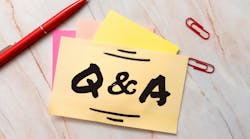Q. What is a Class II Hazardous (Classified) location?
A. Class II locations are those where the presence of combustible dust may be suspended in the air with quantities sufficient to ignite or explode [500.5(C)]. A Class II, Division 1 location is an area where combustible dust may exist under any of the following conditions [500.5(C)(1)]:
• Nonconductive combustible dust is continuously or periodically suspended in the air in sufficient quantities to produce mixtures that will ignite or explode.
• If faulty equipment releases ignitible mixtures of dust and the equipment becomes a source of ignition.
An area where combustible dust would become hazardous under any of the following conditions [500.5(C)(2)]:
• If combustible dust, due to abnormal operations, may be present in the air in quantities sufficient to produce explosive or ignitible mixtures, or
• If combustible dust accumulation is normally insufficient to interfere with the normal operation of electrical equipment, but where malfunctioning of equipment may result in combustible dust being suspended in the air, or
• If combustible dust accumulations on, in, or near electrical equipment could be sufficient to interfere with the safe dissipation of heat from electrical equipment, or could be ignitible by abnormal operation or failure of electrical equipment.
Note 1: The quantity of combustible dust that may be present and the adequacy of dust removal systems should be considered when determining the area classification.



